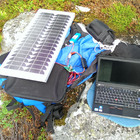
Maximum power point charger for solar panels
Problem
A solar panel can not be directly connected to a battery or a conventional charger with the expectation that it will deliver the rated power. Maximum charging power will only be achieved when the solar panel can operate on its optimum voltage level - the maximum power point.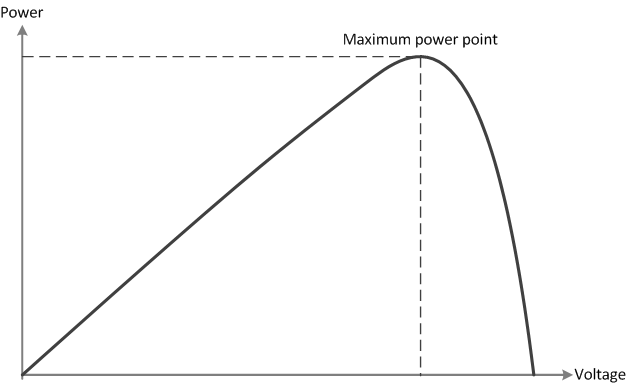
What further complicates this is that the maximum power point is not fixed, but will vary with solar intensity. The solution is to build a charger able to continously track the maximum power point and change the apparent load seen by the solar panel to ensure maximum power is transferred. An example with voltages and currents is shown below:

Design
The hardware is basically a microcontroller reading voltage and current to control the duty cycle of a synchronous switch mode buck regulator.The principle of the software is very simple. The power from the solar panel is calculated as voltage * current measured by the microcontroller. The duty cycle of the switching regulator is always changed slightly. If this change results in increased power from the solar panel, the algorithm continues in this direction until the power stops increasing. At this point the algorithm changes direction.
The switching circuit itself uses some power, so to conserve power when the sun is down, the charger enters a sleep state when the charge current goes below a treshold and starts again when the solar panel open voltage increases above another treshold.
Initial testing did show some very noisy voltage and current measurements due to voltage spikes on switching transitions. Adding a few low ESR ceramic capacitors close to the switching circuit dramatically reduced the ripple and measurements were suddenly very stable.
The very first prototype was soldered with components I had at hand, so that explains why you see a lot of non-matching footprints ;)
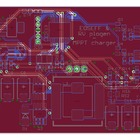
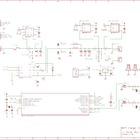
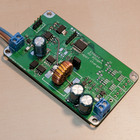
Results
I used a 20 W panel from eBay to do the testing. Charging a 3 cell (3S) LiPo-battery directly provided a peak charge power of around 15 W. Putting the MPPT-charger in between increased the charging power to 21.5 W - even more than the rated power! I have some more data available, so I might publish some more data including efficiency.